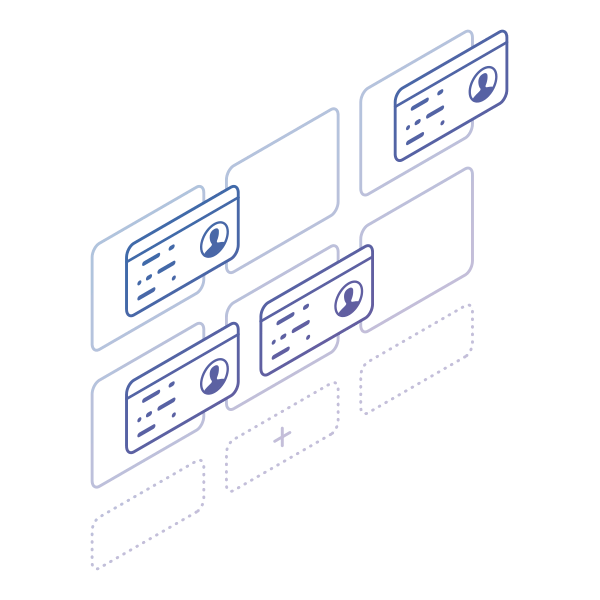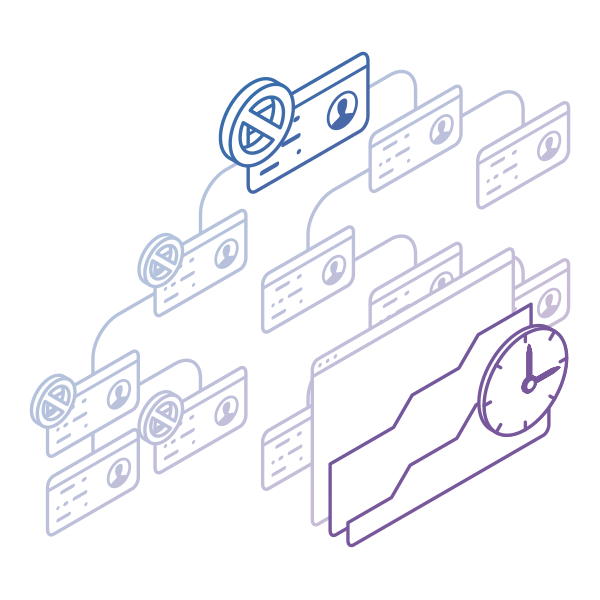Understanding Kanban and Scrum: Key Differences and Applications
Kanban and Scrum are two widely used project management approaches for organizing and managing work in software development and other knowledge work fields. They each have distinct principles and practices and are suited to different scenarios. Kanban focuses on maintaining a continuous flow of work and limiting the amount of work in progress (WIP). In contrast, Scrum relies on iterative, short-term commitments called sprints to develop and deliver work.
Let's illustrate with a restaurant kitchen.
In a kanban kitchen, there is a visual board where each order is represented by a card moving through stages like "Order Taken," "Preparation," "Cooking," and "Ready to Serve." The kitchen staff focuses on limiting the number of orders in each stage to ensure a smooth, continuous flow without overwhelming any part of the process.
In a scrum kitchen, the team works in fixed time blocks (sprints). At the beginning of each sprint, the team commits to preparing a specific set of dishes (tasks) within that time frame. They plan, execute, and review their work in these short cycles, ensuring they deliver a complete set of dishes at the end of each sprint.
Let's dive into the specific distinguishing factors between the two.

7 Essential Differences between Kanban and Scrum
1. Roles and Accountabilities
Scrum requires assigning Agile roles, including a Product Owner, who manages the backlog and guides the team, a Scrum Master, who sets timelines, and a Development Team, who carries out the work agreed upon during sprint planning.
Kanban allows you to maintain your current structure without drastic changes. However, you can optionally implement two roles: the Service Delivery Manager, who ensures efficient workflow and continuous improvement, and the Service Request Manager, often a secondary role for the team manager, responsible for managing process policies, governance, and risk reduction.
2. Planning
In Scrum, planning occurs iteratively at the start of each sprint in a meeting where the Development Team, Product Owner, and Scrum Master break down user stories into tasks, estimate the time needed, commit to completing them, and begin work, with any mid-sprint priority changes requiring the sprint to be aborted and replanned.
Planning in Kanban relies on a probabilistic approach, using past workflow data to make predictions. This planning is based on work types, sizes, classes of service, and other factors related to the work itself rather than the team processing it.
Since kanban workflows are continuous, it is common to extend the Requested section of a kanban board with roadmap columns like "This Month" and "Next Month" to visualize planned work.
This establishes a pull system, allowing team members to start new assignments based on priority when there is available capacity. By understanding the average time required to complete tasks of different types and sizes and how many work items the team finishes weekly, you can plan each task's start and end dates.
Businessmap is the most flexible software
to align work with company goals
3. Work Commitment
Kanban emphasizes deferring commitment until the last moment to maintain agility and deliver value frequently and on time. By enforcing Work In Progress (WIP) limits, team members focus on completing their current tasks before starting new ones, ensuring continuous progress and efficient workflow.
In Scrum, the commitment for a sprint is in the form of forecasting. When the team doesn't anticipate their capacity accurately, unexpected problems arise, the sprint fails, or personal heroics are required to finish everything on time.
Looking at the argument Kanban vs. Scrum, you can't ignore the key performance indicators (KPI) that will become part of your work life when you select.
Scrum KPIs
Scrum teams focus on two primary KPIs:
-
Velocity measures the actual story points completed, typically averaged over previous sprints. Velocity helps plan how many product backlog items the team should take into the next sprint.
-
Planned Capacity: This indicates the team's availability for the sprint, considering factors like vacations or illnesses. The team adjusts the number of product backlog items based on their available capacity, taking on fewer items when capacity is lower and more when new team members are added.
To monitor these KPIs, Scrum teams often use:
-
Burndown Charts are visual representations of the remaining work versus the time left in the sprint.
-
Velocity Charts are histograms showing the team's past performance.
Kanban KPIs
Kanban teams typically use different KPIs to measure performance and efficiency, such as:
-
Cycle Time: The time it takes to complete a task from start to finish.
-
Lead Time: The total time from when a task is requested to when it is completed.
-
Work In Progress (WIP) Limits: The maximum number of tasks in progress at any given time to ensure focus and flow.
The goal for kanban teams is to reduce the values of these metrics (usually measured in days) over time to maintain workflow efficiency. To closely monitor these KPIs, kanban teams use:
-
Cumulative Flow Diagrams (CFD): This chart shows how stable the workflow is and helps identify areas needing improvement to make the process more predictable.
-
Cycle Time Histograms: This chart helps monitor process performance over time, providing insights into how cycle times are trending.
These KPIs help teams to monitor and optimize their workflow, ensuring continuous delivery and improvement.
10 Years Kanban Experience In 1 Free Book.
Project Manager's Guide to Kanban
5. Kanban vs. Scrum: Meetings and Events
Meetings in Kanban are optional, but if you choose to implement them, you can select between team-level and service-oriented kanban cadences to keep your team aligned and maintain a steady workflow. These include various types of meetings, such as daily meetings, replenishment and commitment meetings, delivery planning meetings, and several review meetings (service delivery, operations, risk, and strategy). You can combine or skip meetings based on your team's needs. For instance, you might combine the Service Delivery Review and the Replenishment & Commitment meeting weekly. Flexibility is vital, allowing you to improvise as needed.
In contrast, Scrum mandates four types of meetings within each sprint cycle: sprint planning, daily scrum, sprint review, and sprint retrospective. Additionally, many teams hold backlog refinement sessions near the end of the sprint to reprioritize and size user stories, although the Scrum guide does not officially require this.
6. Kanban Board vs. Scrum Board
Visual management boards are applied in both Kanban and Scrum. However, there are some fundamental differences between them.
The scrum board is an extension of the product backlog. When the team commits to a given amount of work, it is added to the scrum backlog on the board, and then the team starts putting work in progress at their will. The goal is to get everything done by the end of the sprint. Logically, the board is reset after each iteration.
The kanban board is a continuous map of the team's process to create a sustainable system that endures over time. A well-designed kanban board includes visualized WIP limits to control the amount of work entering and leaving the process, aiming to improve delivery speed.
Businessmap is the most flexible software
to align work with company goals
7. How Kanban and Scrum Teams Estimate Work
In Scrum, estimation is a crucial part of the process, typically conducted during backlog refinement. The team ensures that work items are adequately sized and prioritized for the upcoming sprint, planning their capacity during the sprint planning meeting.
 Scheduling work in sprits during a backlog refinement
Scheduling work in sprits during a backlog refinement
The primary purpose of the Agile estimation practice is to size work items, often using the Fibonacci sequence, and determine how many items the team can complete within the sprint. Scrum software allows you to assign story points to each item and track them.
Kanban takes a different approach by recommending that large assignments be broken down into smaller, manageable tasks without compromising the final deliverable's value. This supports a steadier and more reliable workflow.
Instead of traditional estimation, Kanban collects past lead time, cycle time, and throughput data. Advanced kanban software uses this historical data to forecast future workflow. For example, Businessmap's analytics module features Monte Carlo simulation, providing statistically accurate predictions of how many tasks the team will likely complete within a specified time frame.
| |
Kanban |
Scrum |
| Roles |
Kanban allows you to maintain your current structure without drastic changes; optional roles: Service Delivery Manager and Service Request Manager. |
Scrum requires assigning Agile roles, including a Product Owner, a Scrum Master, and a Development Team. |
| Planning |
Just-in-time planning using past workflow data to make predictions. |
Work is planned and divided into smaller user stories at the start of each sprint. |
| Work Commitment |
Based on capacity. Team members focus on completing work items in progress before starting new ones. |
Based on sprint forecasting, which determines the amount of work to be delivered by the end of the sprint. |
| KPIs |
Lead and cycle time measured using a cumulative flow diagram and cycle time histogram. |
Velocity and projected capacity measured using burndown and team velocity charts. |
| Meetings and Events |
Optional, including daily standup, replenishment & commitment meeting, delivery planning meeting, service delivery review, operations review, risk review, and strategy review. |
Four mandatory types of meetings include sprint planning, daily scrum, sprint review, and sprint retrospective. |
| Work Boards |
Kanban boards that remain continuous and are never reset. |
Scrum boards which are reset after each sprint. |
| Work Estimation |
Relies on collecting historical data about the workflow to create predictable forecasts about the work that can be delivered for a given period. |
During backlog refinement, team members determine how many work items can be executed within the predefined period of the sprint. |
Enhancing Project Management with Scrum or Kanban Software Tools
Choosing the right Kanban or Scrum project management tool can significantly enhance your implementation and maximize the benefits of each methodology. These software solutions provide clear process visibility, facilitate easy project status tracking, enable early problem identification and more.
Scrum Software
Scrum software often includes visual boards like a kanban board, despite traditionally using text-centered interfaces. On a scrum board, the team adds all work items (stories) at the start of each sprint and keeps the list unchanged until the sprint ends. The team considers the sprint successful only when all tasks are completed. Afterward, they hold a retrospective meeting and reset the board for the next sprint. Cross-functional teams with all necessary skills typically manage scrum boards and set work-in-progress (WIP) limits based on the tasks committed to each sprint.
 Basic scrum board example
Basic scrum board example
Kanban Software
Kanban software uses visual boards to map all processes and work items, ensuring full transparency and visibility. Each work unit appears as a card on the board, with columns indicating work stages and swimlanes for priorities or work types.
Unlike scrum boards, kanban boards do not tie to a specific team but focus on workflow efficiency. Teams set WIP limits per workflow stage to prevent bottlenecks and quickly identify and resolve any that occur. Kanban boards do not have time restrictions, allowing new work items to be added anytime, provided they respect WIP limits. This continuous flow eliminates the need for periodic board resets.
Advanced kanban platforms also gather data for each work item, helping teams improve cycle times.
 Basic kanban board example
Basic kanban board example
Businessmap is the most flexible software
to align work with company goals
Essential Tools for Tracking and Analyzing Work in Scrum and Kanban Teams
In scrum software, the backlog stores all future activities for the sprint. To ensure the team stays on track, scrum teams use a burndown chart, a key performance indicator that illustrates how much work remains in the project. While burndown charts provide a quick overview of progress, they can be limited in identifying specific process gaps, as they only show a summary of the work completed by the entire team.
 Example of a burndown chart
Example of a burndown chart
Kanban software, however, does not use burndown charts due to its continuous workflow. Instead, digital kanban boards feature a cumulative flow diagram (CFD), which automatically collects data for each task as it enters the workflow. This data helps analyze cycle times for all assignments and visualizes work items and the time spent in each work stage. The CFD allows the team to identify bottlenecks immediately; the longer a task stays in a stage, the wider that stage appears on the diagram. This enables teams to pinpoint and address problematic parts of the workflow directly rather than just being alerted that something is wrong.
 Examples of a Cumulative Flow Diagram
Examples of a Cumulative Flow Diagram
What Do Kanban and Scrum Have in Common?
Kanban and Scrum are both iterative approaches to project management that share several key similarities:
- Both methodologies rely on self-organized, cross-functional teams.
- They use visual boards to track progress and manage work effectively.
- They welcome internal and external feedback, allowing teams to adapt quickly to changing client and business requirements.
- They emphasize strong team collaboration for sharing knowledge and ideas.
- They promote open work transparency to foster continuous improvement and drive towards a shared goal.
- They prioritize and deliver work based on customer demand and business value.
Integrating Kanban and Scrum for Enhanced Team Productivity
Both Kanban and Scrum were designed to boost team efficiency and productivity. Choosing between them depends on the specific needs of each team, as each tool comes with its methodology or framework. However, it is common for scrum teams to incorporate kanban practices and vice versa.
In our experience, a scrum workflow can be effectively visualized on a kanban board. By converting the backlog area into a "Product Backlog," teams can visualize user stories and epics as cards, transferring their sprint using kanban boards. This hierarchical structure allows scrum teams to link user stories to a sprint or break down the sprint into individual user stories, enabling automatic progress tracking as tasks are completed.
 Visualization of a scrum workflow on a kanban board in Businessmap
Visualization of a scrum workflow on a kanban board in Businessmap
Kanban vs. Scrum: Infographic Comparison
To better understand how Kanban and Scrum are different, let’s take a final look at this head-to-head comparison (open the image in a new tab for a full view).

Businessmap is the most flexible software
to align work with company goals
In Summary
Both Kanban and Scrum have dedicated followers and notable success stories. When implemented in software, the main differences between Kanban and Scrum remain evident:
- Flexibility vs. Framework: Kanban software adapts flexibly to any team, whereas scrum tools are based on a structured framework.
- Continuous Improvement vs. Estimation: Kanban focuses on constant improvement with software that helps analyze and refine workflows. Scrum, on the other hand, emphasizes planning through story points with tools that measure how well the team meets these estimations.
- Work In Progress (WIP) vs. Sprint Commitment: Kanban software allows teams to limit WIP to maintain productivity by matching work to real capacity. Conversely, Scrum software locks the work queue once a sprint begins, ensuring focus on current tasks but limiting the ability to adapt to changes during the sprint.
Understanding these differences helps teams choose the right methodology and software to enhance productivity and workflow management.





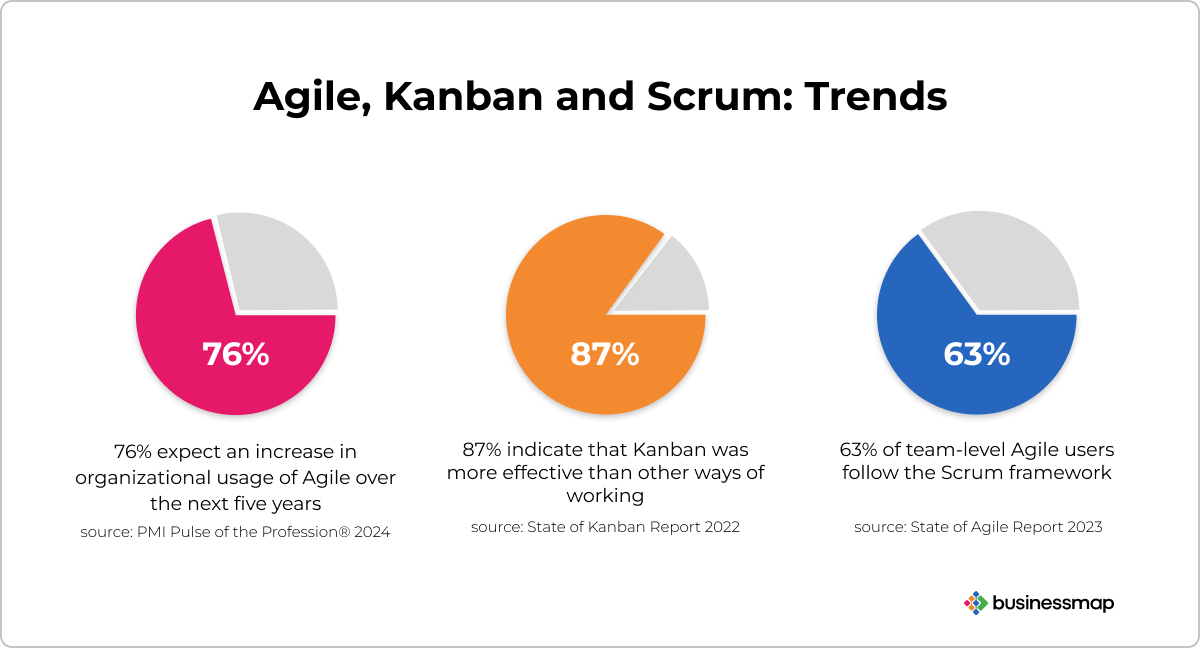
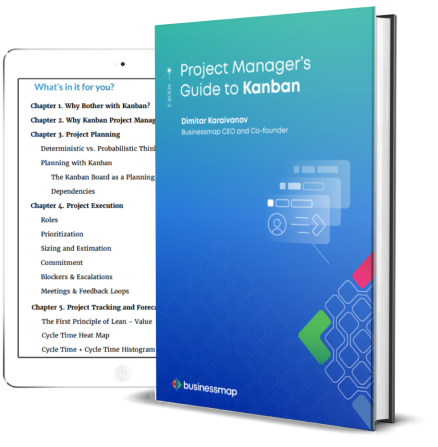
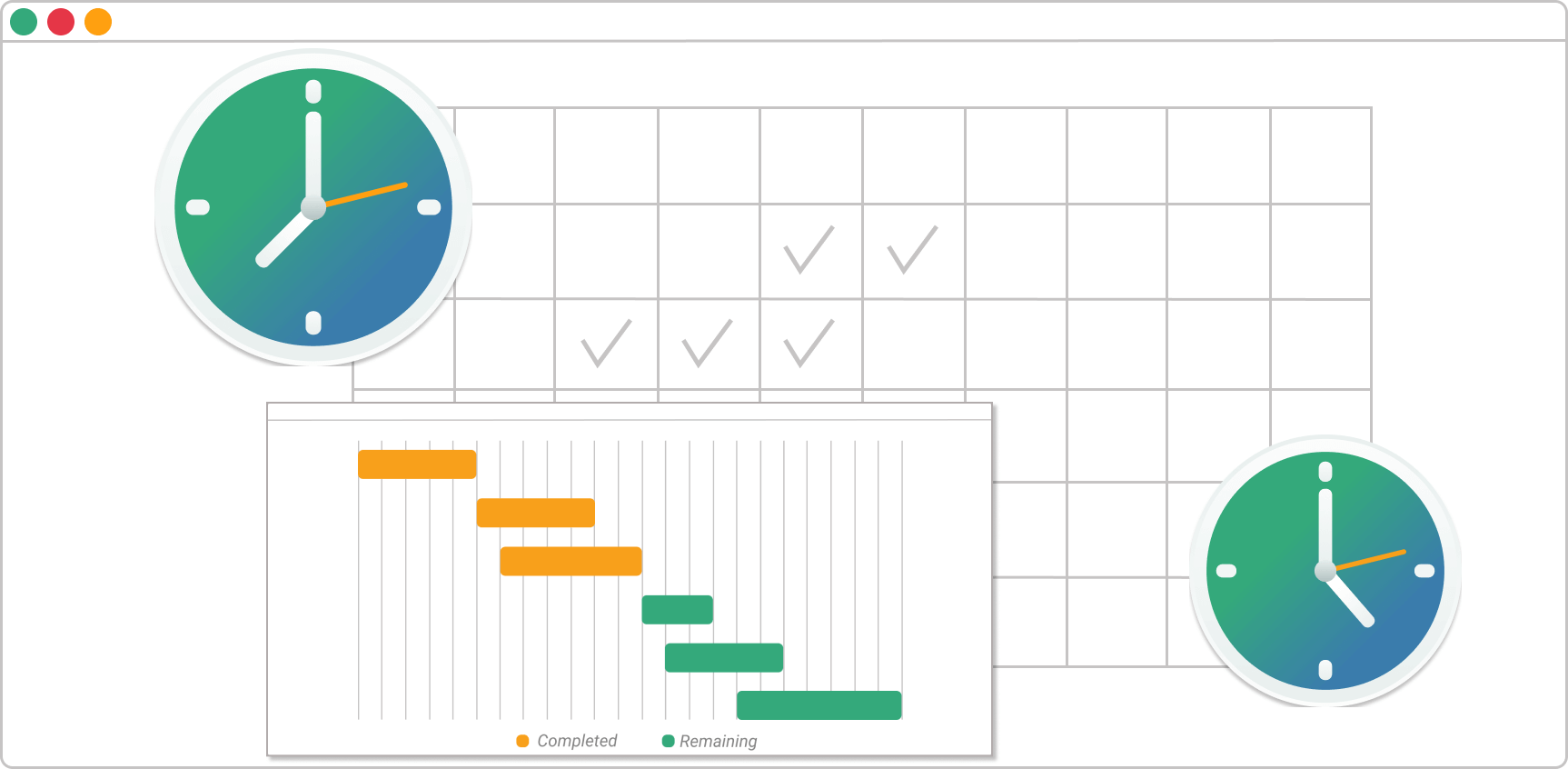 Scheduling work in sprits during a backlog refinement
Scheduling work in sprits during a backlog refinement Basic scrum board example
Basic scrum board example Basic kanban board example
Basic kanban board example Example of a burndown chart
Example of a burndown chart 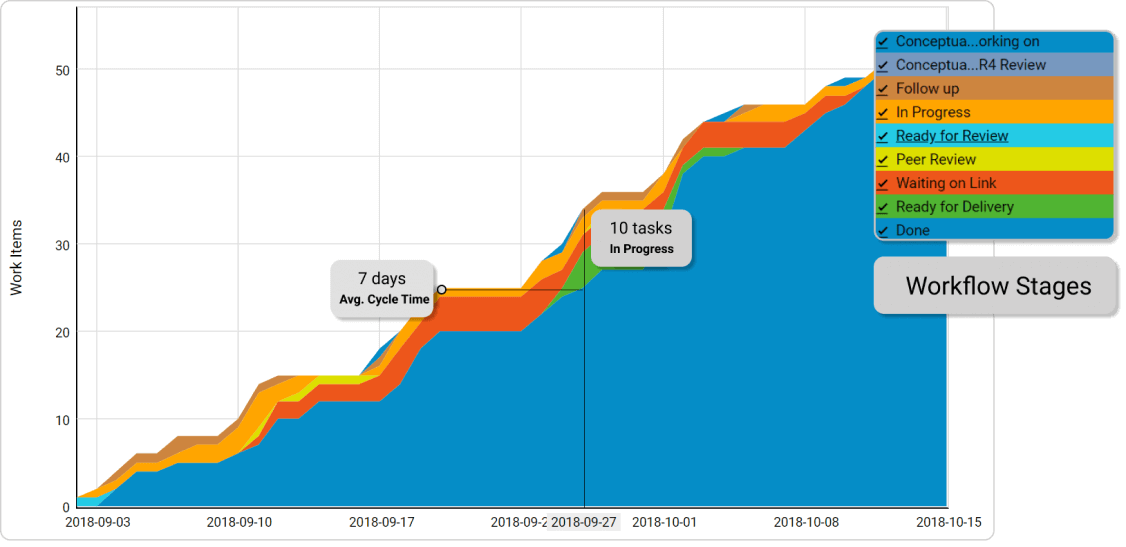 Examples of a Cumulative Flow Diagram
Examples of a Cumulative Flow Diagram 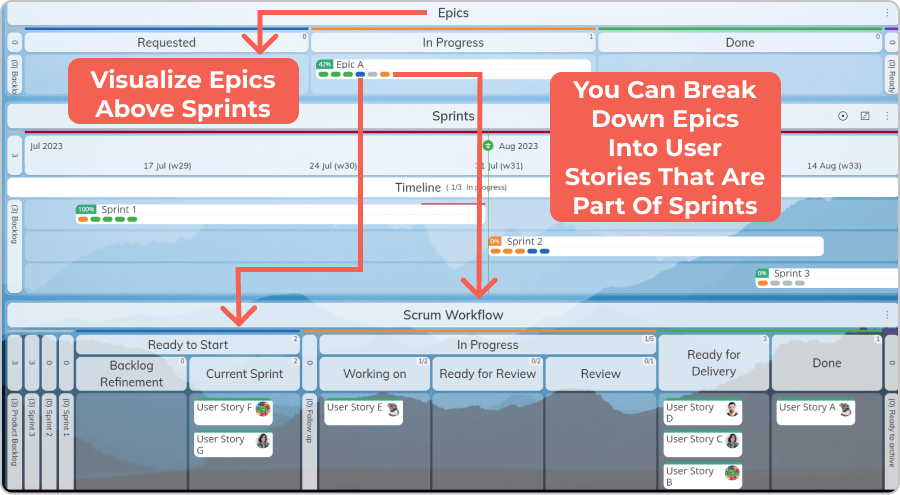 Visualization of a scrum workflow on a kanban board in Businessmap
Visualization of a scrum workflow on a kanban board in Businessmap

